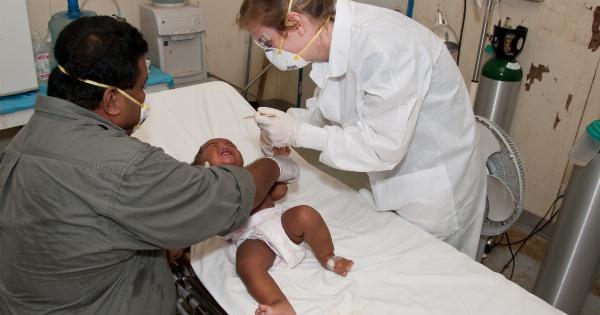Genital yeast infection, also known as candidiasis, is a common condition that affects both men and women. It is caused by an overgrowth of the Candida fungus, which normally resides in our bodies without causing harm.
However, when the balance of bacteria and yeast in the genital area is disrupted, it can lead to an overgrowth of yeast and result in uncomfortable symptoms.
1. Itching and Irritation
One of the most common signs of a genital yeast infection is itching and irritation in the affected area. This itchiness may be accompanied by redness and a burning sensation.
The itching can be quite intense and may worsen during periods of moisture, such as after showering or exercising. It is important not to ignore these symptoms, as they are often indicative of a yeast infection.
2. Abnormal Discharge
Another sign of a genital yeast infection is abnormal discharge. This discharge is usually thick, white, and odorless. It may resemble cottage cheese and can be present in both men and women.
If you notice an increase in discharge that has a different texture or appearance than usual, it is worth getting checked out by a healthcare professional.
3. Pain or Discomfort During Sexual Intercourse
For women, a genital yeast infection can cause pain or discomfort during sexual intercourse. The infection can lead to inflammation and irritation of the vaginal tissues, making intercourse painful.
It is important to communicate with your partner and seek medical attention if you experience any discomfort during sex, as it could be a sign of an underlying infection.
4. Rash and Redness
Yeast infections in the genital area can also cause a rash and redness. This can occur around the vagina or penis and may spread to the inner thighs and buttocks. The rash may be itchy and uncomfortable, and scratching can worsen the symptoms.
If you notice any unusual rashes or redness in your genital area, it is important to have it evaluated by a healthcare professional.
5. Urinary Symptoms
In some cases, a genital yeast infection can also affect the urinary tract and cause urinary symptoms. This can include a frequent urge to urinate, pain or burning during urination, and cloudy or dark urine.
If you experience any urinary symptoms along with other signs of a yeast infection, it is essential to seek medical advice to rule out other potential causes.
When to See a Doctor
If you are experiencing any of the above symptoms, it is recommended to see a healthcare professional for an accurate diagnosis and appropriate treatment.
While some mild yeast infections may clear up on their own, others may require antifungal medications to resolve. It is important not to ignore these signs, as untreated yeast infections can lead to further complications and discomfort.
Preventing Genital Yeast Infections
While genital yeast infections are common and can occur in anyone, there are steps you can take to help prevent them from happening in the first place. Here are some preventative measures you can incorporate into your routine:.
1. Practice Good Hygiene
Keeping the genital area clean and dry can help prevent yeast infections. Avoid using harsh soaps or douches, as these can disrupt the natural balance of bacteria and yeast.
Instead, opt for mild, fragrance-free cleansers and pat the area dry after showering or using the restroom.
2. Wear Breathable Fabrics
Tight-fitting and synthetic clothing can trap moisture and create an ideal environment for yeast to thrive. Opt for breathable fabrics such as cotton, which allow air to circulate and help keep the genital area dry.
Avoid wearing wet swimwear for extended periods and change out of sweaty workout clothes promptly.
3. Avoid Excessive Antibiotic Use
Antibiotics can disrupt the balance of bacteria in the body, including the genital area. Use antibiotics only when necessary and as prescribed by your healthcare provider.
If you do need to take antibiotics, consider taking probiotics to help restore the natural balance of bacteria.
4. Practice Safe Sex
Using barrier methods, such as condoms, can help reduce the risk of contracting sexually transmitted infections that may increase the chances of developing a yeast infection.
Additionally, it is essential to communicate with your partner about any symptoms or infections to prevent spreading or reinfection.
5. Maintain a Healthy Lifestyle
A strong immune system can help prevent yeast infections. Make sure to eat a balanced diet, exercise regularly, and get enough sleep to support your overall health and immune function.
Stress management techniques, such as meditation or yoga, can also contribute to a healthy immune system.
Conclusion
Genital yeast infections are common and can cause uncomfortable symptoms. It is important not to ignore the signs, as prompt treatment can help alleviate discomfort and prevent further complications.
If you experience persistent or severe symptoms, it is essential to seek medical advice for an accurate diagnosis and appropriate treatment. By practicing good hygiene, wearing breathable fabrics, and maintaining a healthy lifestyle, you can reduce the risk of developing genital yeast infections.





























